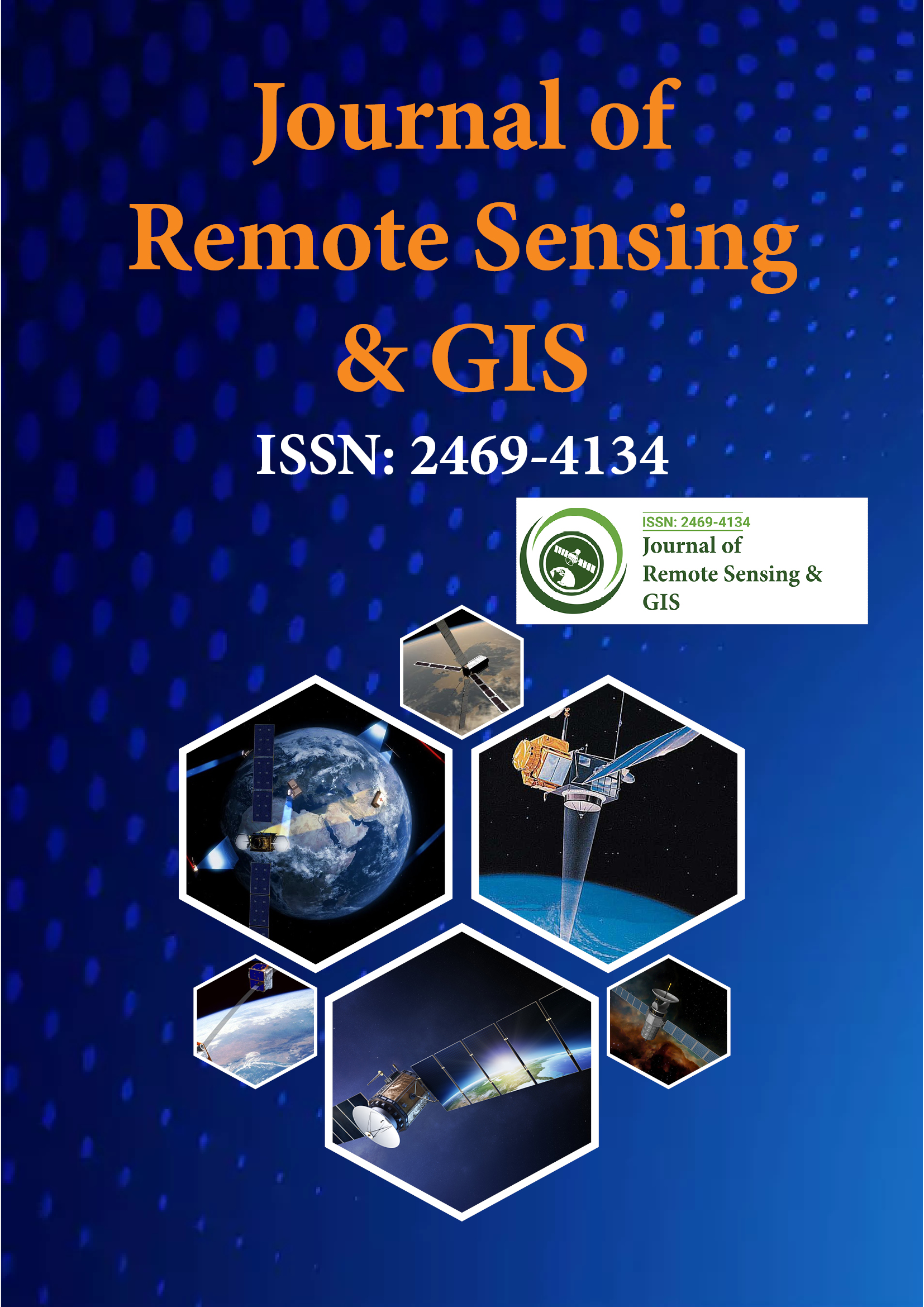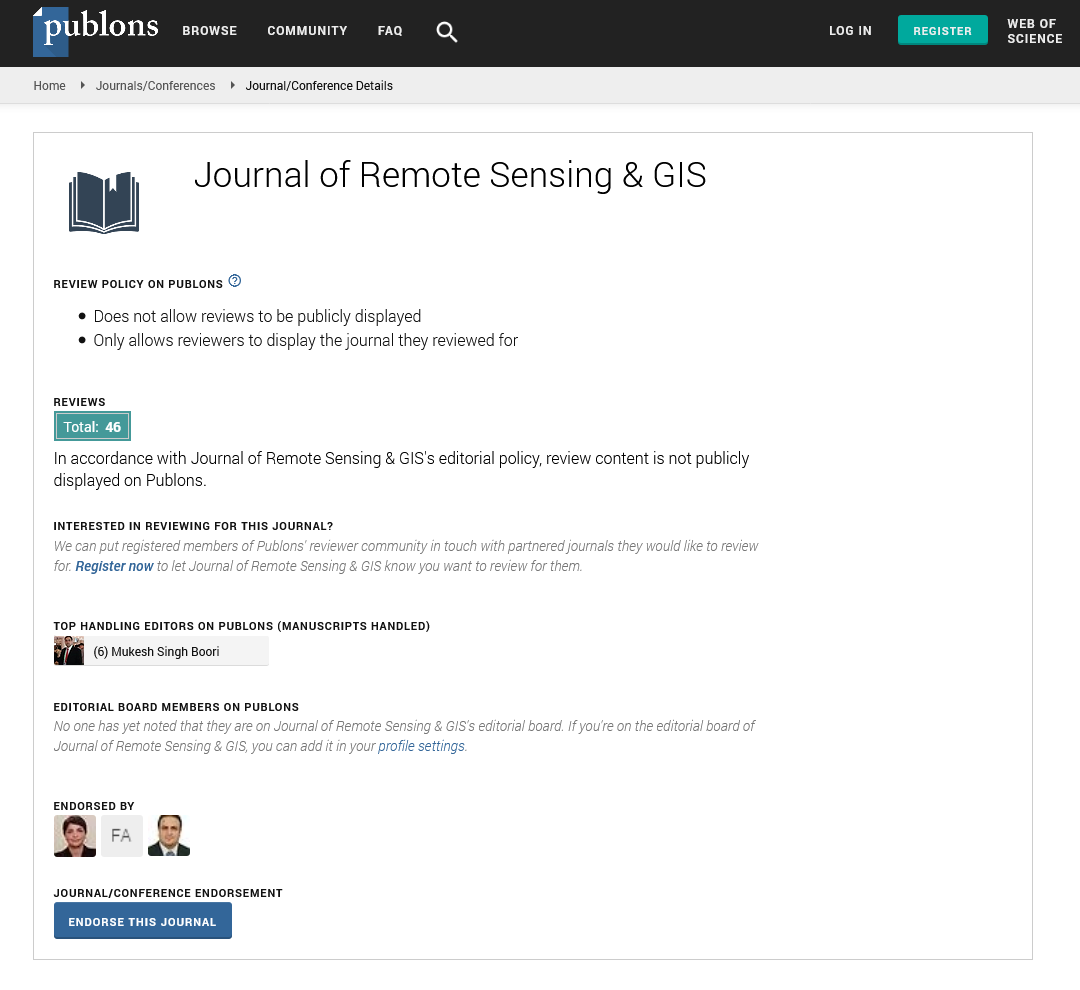Indexed In
- Open J Gate
- RefSeek
- Hamdard University
- EBSCO A-Z
- OCLC- WorldCat
- Publons
- International Scientific Indexing
- Euro Pub
- Google Scholar
Useful Links
Share This Page
Journal Flyer

Open Access Journals
- Agri and Aquaculture
- Biochemistry
- Bioinformatics & Systems Biology
- Business & Management
- Chemistry
- Clinical Sciences
- Engineering
- Food & Nutrition
- General Science
- Genetics & Molecular Biology
- Immunology & Microbiology
- Medical Sciences
- Neuroscience & Psychology
- Nursing & Health Care
- Pharmaceutical Sciences
Using satellite remote sensing and GIS techniques for environmental public health applications
2nd International Conference on GIS and Remote Sensing
October 02-03, 2017 Vienna, Austria
Mohammad Z Al Hamdan, William L Crosson and Muhammad G Barik
Universities Space Research Association at NASA Marshall Space Flight Center, USA
Posters & Accepted Abstracts: J Remote Sensing & GIS
Abstract:
A major challenge in studying the relationship between heat exposure and air quality and human health outcomes is characterization of population-level or individual-level exposures. Typically, unavailable human exposure measurements are estimated using various techniques that rely on environmental measures available from existing meteorological and ambient air monitoring networks. Although monitoring data provide the best characterization of heat and pollutant concentration levels at a specific place and time, temporal and spatial gaps in these data can limit their applicability for exposure assessment in health studies. Available fixed-site meteorological and air quality monitoring stations tend to be located strategically in areas with high population density. Thus, many epidemiology studies examining the association between the environment and health have had to rely on measurements from stationary ambient monitoring sites located at substantial distances from where many individuals actually lived or worked to develop surrogates for human exposures. Moreover, the frequency of monitoring for specific environmental variables varies from hourly to once every several days. One promising method for characterizing environmental exposure for public health practice and epidemiologic research is integration of satellite remote sensing data with monitoring network data in a geographic information system (GIS). Remotely-sensed data and GIS techniques can also be useful in filling the temporal and spatial gaps found with ground-level monitor data. Case studies of using satellite remotelysensed data and GIS geospatial techniques in environmental public health applications will be presented.

